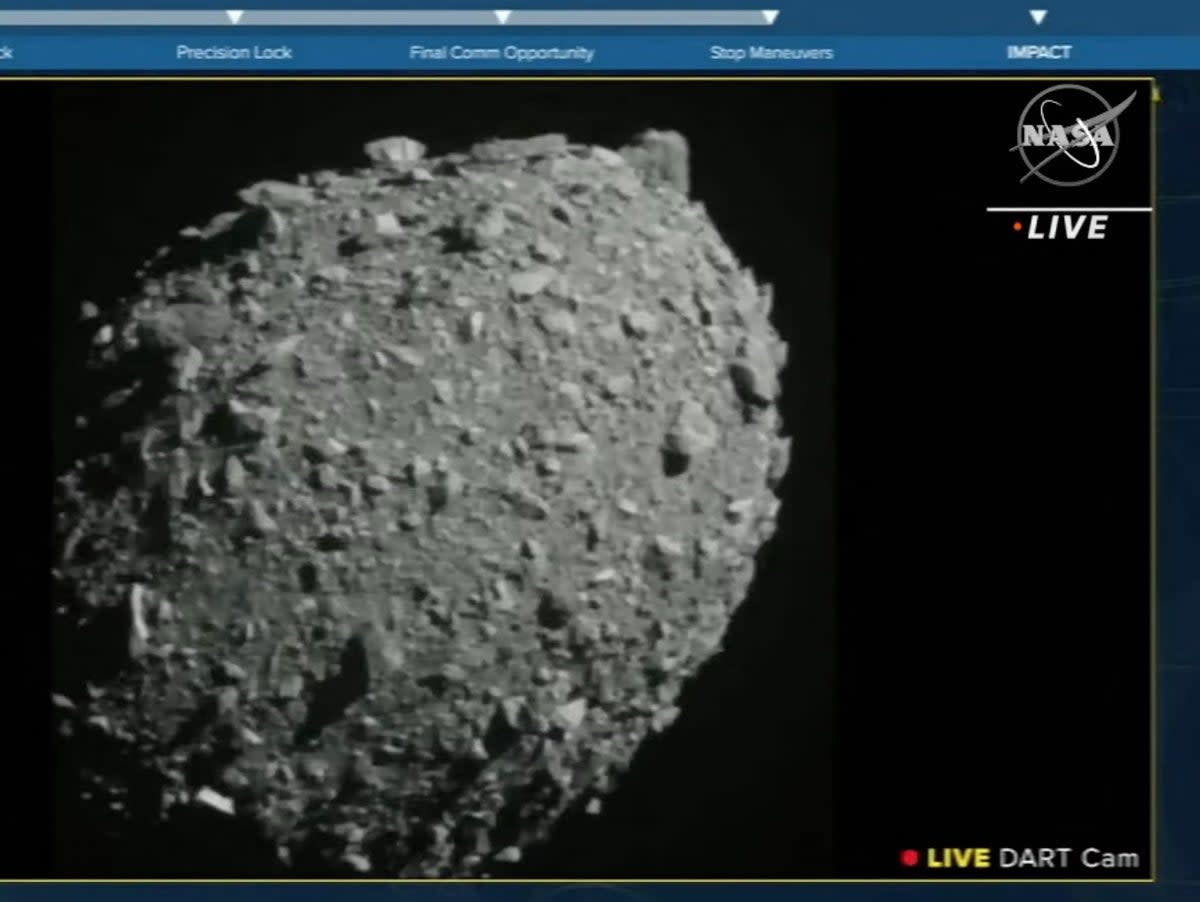Webb, Hubble telescope images reveal Nasa Dart spacecraft slamming into asteroid was ‘bigger than expected’

Nasa has released images taken by the Webb and Hubble space telescopes that worked together simultaneously for the first time, capturing the space agency’s Dart spacecraft slamming into the asteroid Dimorphos on Monday.
Working in sync, the Webb telescope and its older counterpart, have shed more light on the cosmic event and battered asteroid, suggesting the collision was “bigger than expected”, said Ian Carnelli of the European Space Agency (ESA), according to AFP.
“For the first time, Webb and Hubble have simultaneously captured imagery from the same target in the cosmos: an asteroid that was impacted by a spacecraft after a 7-million-mile journey,” Nasa Administrator Bill Nelson said.
“These images provide us with clues of what happened in the first hours after impact, and clearly there is much more happening than we had foreseen!” Mr Carnelli, who is the mission manager of ESA’s Hera programme to probe the asteroid in 2024, said.
Both Webb and Hubble captured the event in different wavelengths of light, with the former observing in infrared and the latter in visible light.
1/ #BFFinSpace Hubble (L) and Webb (R) have captured detailed views of the #DART impact, marking the first time that the two observatories have viewed the same target simultaneously. Read more: https://t.co/imtfx9fYeK pic.twitter.com/tSClGoAvWB
— ESA Webb Telescope (@ESA_Webb) September 29, 2022
The Hubble space telescope observed Dimorphos and the larger asteroid it encircles ahead of the impact.
It again observed the binary asteroid system 15 minutes after DART hit the surface of Dimorphos, Nasa noted.
Overall the space telescope captured around 45 images immediately before and following the impact.
With these images, researchers could estimate that the brightness of the system increased by three times after impact, and saw that brightness hold steady, even eight hours after impact.
4/ And here is @HUBBLE_space 's complementary view: ejecta, material thrown out from the impact, appears as rays stretching out from the body of the asteroid. The bolder, fanned-out spike of ejecta to the left of the asteroid is where DART impacted. pic.twitter.com/6s3VHXd8z8
— ESA Webb Telescope (@ESA_Webb) September 29, 2022
“When I saw the data, I was literally speechless, stunned by the amazing detail of the ejecta that Hubble captured,” Jian-Yang Li, a researcher at Planetary Science Institute, said in a statement.
“I feel lucky to witness this moment and be part of the team that made this happen,” he added.
Webb took one observation before the impact, and several over the next few hours, capturing 10 images.
The images by Webb show a tight compact core, with plumes of material appearing as wisps streaming away from the center of where the impact took place, according to Nasa.
3/ This gif shows Webb's view of the impact, a tight, compact core, with plumes of material appearing as wisps streaming away from the centre of where the impact took place. pic.twitter.com/ipVVGaTsa3
— ESA Webb Telescope (@ESA_Webb) September 29, 2022
These observations made by the two telescopes will help astronomers unravel key details about the nature of the surface of Dimorphos, how much material was ejected by the collision, and how fast it was ejected, the space agency said.
“This is an unprecedented view of an unprecedented event,” Andy Rivkin, DART investigation team lead with the Johns Hopkins University, said.
“All of humanity eagerly awaits the discoveries to come from Webb, Hubble, and our ground-based telescopes — about the DART mission and beyond,” Mr Nelson added.
The Dart mission is a proof-of-concept test by Nasa to strike the Dimorphos some 68 million miles from Earth to understand how to deflect or change the trajectory of space rocks that could potentially threaten the existence of Earth.
“Dart is demonstrating what we call the kinetic impact technique for changing the speed of the asteroid in space and therefore changing its orbit. This demonstration is extremely important to our future here on the earth, and life on Earth,” Nasa planetary defense officer Lindley Johnson had said.


